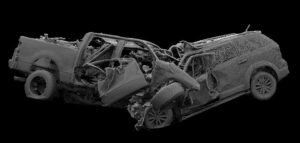
“Technology could’ve prevented this heartbreaking crash — just as it can prevent the tens of thousands of fatalities from impaired-driving and speeding-related crashes we see in the U.S. annually,” said NTSB Chair Jennifer Homendy. “We need to implement the technologies we have right here, right now to save lives.”
As a result of the investigation, the NTSB is recommending measures leveraging new in-vehicle technologies that can limit or prohibit impaired drivers from operating their vehicles as well as technologies to prevent speeding. These include:
- Requiring passive vehicle-integrated alcohol impairment detection systems, advanced driver monitoring systems or a combination of the two that would be capable of preventing or limiting vehicle operation if it detects driver impairment by alcohol. The NTSB recommends that the National Highway Traffic Safety Administration require all new vehicles to be equipped with such systems.
- Incentivizing vehicle manufacturers and consumers to adopt intelligent speed adaptation systems that would prevent speed-related crashes. This is a reiteration of a previous NTSB recommendation to NHTSA.
“We have to remember that technology is only part of the solution. To save lives on our roads, we need to look more broadly at the entire transportation system, which includes everything that can prevent a crash,” said Homendy, a strong supporter of the comprehensive Safe System Approach to reducing roadway deaths.
Driving under the influence of alcohol remains a leading cause of injury-involved highway crashes, the NTSB said. Since 2000, more than 230,000 people have lost their lives in crashes involving alcohol-impaired drivers according to NHTSA. In 2020, an estimated 11,654 fatalities occurred in alcohol-impaired crashes. This number represented about 30 percent of all traffic fatalities that year and a 14% increase over the 10,196 individuals who died because of alcohol impaired crashes in 2019.
To prevent alcohol and other drug-impaired driving crashes, the NTSB has called for in-vehicle alcohol detection technology, the lowering of the blood alcohol concentration limit to .05 g/dL or lower, alcohol ignition-interlock devices for people convicted of driving while intoxicated and recommended that regulators develop a standard of practice to improve drug toxicology testing, the organization said.